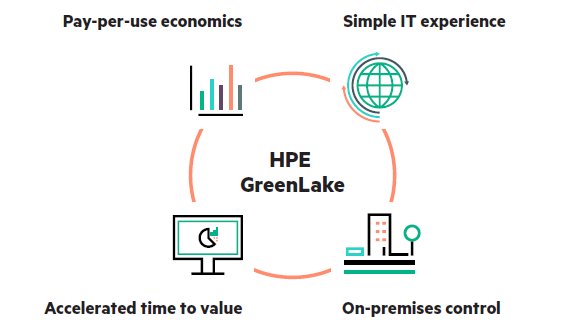Nutanix and HPE – A great partnership
Nutanix and HPE announced a global agreement in April this year to produce Nutanix Hyper Converged Infrastructure (HCI) available on the HPE ProLiant Server platform known as Nutanix DX Appliances.
This offering will also be available on a consumption-based model utilising HPE GreenLakes Infrastructure as a service. This means more flexibility and cost savings using a pay per use model so you can start implementing this new technology today, without the worry of upfront costs and planned budgets.
Nutanix DX Appliances are now available and ready to ship and will be available as a consumption-based model using the HPE GreenLake solution from October 2019.
Nutanix are market leaders for Hyper-Converged Infrastructure (HCI) and have added HPE ProLiant Server as a hardware platform choice, with such strong reputations as market leaders in their own rights this joint partnership means Nutanix DX Appliance combines cutting edge technologies to bring this new product to the market.
XMA are a platinum HPE partner and a Nutanix Scaler partner meaning we have strong alliances with both vendors and have unrivalled in-house technical resource, to help plan and implement this new technology across your organisation.
What does it mean for your organisation?
More choice with Nutanix in terms of Hardware platforms from XMA; Nutanix, HPE, Lenovo or Dell as well as broad Hypervisor choice; Nutanix AHV, VMware vSphere and Microsoft Hyper-V. Nutanix Software on HPE Hardware, with world class support from both organisations.
Contact us today to find out more about this exciting new announcement
London Borough of Enfield adopts
The Circular Economy approach
XMA, HPE and London Borough of Enfield
Enfield is a UK Local Government (Federal) agency in North London with a population of about 330K. They had been using a small local recycler for their end-of-use assets, but needed to work with a partner that could provide a secure collection service. As a governmental agency, WEEE compliant recycling is important as is strict data security.
XMA were the best company to address this situation. We were already Enfield’s resource for new IT solutions but until now had not been involved in the retirement of assets for the Borough. Combining a strong commitment to the environment (both in its own business practices as well as services it delivers to customers) and deep expertise in working with governmental agencies, XMA put together a solution that not only solved the customer’s immediate need but also provided extra funds back to the agency.
We teamed with HPE Financial Services to provide a Circular Economy approach to Enfield’s challenge by employing HPE Asset Upcycling Services. HPE Financial Services would take out the governmental agency’s existing hardware, securely remove data, then expertly refurbish the equipment and remarket it, returning value from the sale back to the Borough. By remarketing the assets, technology is returned to the circle and there is no e-waste, both of which are tenets of Circular Economy thinking.
Connecting students to the right University with Aruba Networks
Students are faced with a massive decision when choosing a University to continue their education and carve out their futures.
With so many University’s battling to enrol the best students onto their courses, how does the student make this decision?
What if every University they have applied for offers the exact course they want?
What makes YOU the institution stand out to THEM the student?
Facts
-
In 2017 – 2018 it was recorded that there are 164 Higher Education Institutions in the UK1
-
When applying through UCAS a student can apply for a maximum of 5 Universities2
That’s a lot of choice.
As an institution you need to make your offer more appealing than the rest, you want students to pick you above the other institutions on offer and here is how Aruba Networks can help.
Offering your students, the best network connectivity across campus allows your students to work intelligently and unrestricted. With Aruba’s secure and reliable offerings, you can equip your University to meet and withstand the ever-growing demands of user technology.
Download the benefits of Aruba OS8
HPE InfoSight: A smart move for Colleges and Universities
HPE InfoSight and its recommendation engine can pave your institutions path towards an automated, self-learning and self-managing data centre that can free your IT department to focus on creating value and allows your institution to turn exponentially growing data into valuable, actionable insights.
Learn how it ensures 99.9999% guaranteed availability and predicts and resolves 86% of problems before they can disrupt the business of learning, research, and administration. Analysing millions of sensors a second, everyone benefits as the university’s systems grow continuously smarter and more reliable.
Download the whitepaper below to find out more

Gain more control and make savings with IT-as-a-Service
Achieve the flexibility of the public cloud on-premises under your control with consumption-based and flexible IT solutions from HPE GreenLake pay-per-use model.
HPE GreenLake Flex Capacity offers a consumption-based model on-premises, giving you greater flexibility, scalability, and control. Design your own infrastructure solutions, selecting from a broad range of HPE and partner technologies, as well as optional services that can span your infrastructure to your apps and workloads.
World-class expertise from HPE Pointnext
Every HPE GreenLake Flex Capacity solution comes with enterprise-grade support from HPE Pointnext and active capacity management to ensure that your solution grows with the business needs.
4 benefits of using consumption based IT
Outcome-based IT consumption delivers a range of benefits that you can’t get from solutions solely built from scratch or bought from the public cloud. Delivering the best of both worlds, HPE GreenLake enables:
- On-premises for better control over compliance, performance, and security
- Simplified IT that’s operated for you to free up resources and add business value
- Faster time to value with solutions that are ready quickly and evolve ahead of your needs
- Better economics with a flexible, pay-per-use model that offers simplicity and financial clarity
HPE GreenLake Flex Capacity with HPE Nimble Storage
- All-flash storage and predictive analytics with 99.9999% guaranteed up time
- Active capacity management and pay-per-use consumption from HPE GreenLake Flex Capacity meaning simple, secure, storage solution that grows with your business needs.
Read more

Don’t let your network flatline. Stay live with Aruba Networks.
With almost 100% shift to digital across the healthcare industry, having a strong, secure and reliable network has never been more important. Staff are using a multitude of devices to connect to the same network, along with patients and BioMedical devices. Aruba offers solutions to solve these challenges and add benefits such as indoor navigation for the patients to enhance digital services whilst visiting a patient or as a patient themselves.
Total economic impact of IoT in healthcare in 2025 is $170B-$1.6T, making it one of the top three vertical for IoT solutions1
How Aruba enables a digital workforce within the Healthcare Industry
| A Secure, Strong and Reliable network throughout your Healthcare Institution
Seamless Connectivity: indoors and outdoors utilising technologies such as satellite clinics to support numerous devices per user wherever you are. With HPE Smart Rate multi-gig Ethernet you can enable high speed connectivity over Cat6 cabling.
Future proof support for emerging IoT devices and standards.
|
 |
 |
Making sure equipment is connected, secure and reliable at any time.
Point of care decision support. Allowing clinicians to use their mobile devices to make critical decisions. Aruba Ao8 features of reliability in a 24/7 environment – using Aruba technologies such as LiveUpgrade, Hitless Failover, ClientMatch and AppRF.
|
| Creating an unrivalled user experience for patients and guests with location-based services
Patient facing applications which allow indoor mapping, location specific content, proximity-based notifications, user opt – in location sharing (great for visiting family) using Aruba Beacons and Meridian. Making it easier to make your way around the hospital and find a specific bed.
Secured, easy to use Guest Access Portals with ClearPass meaning security even when on a guest wifi network.
|
 |
 |
Adding an extra layer of security and peace of mind for expensive and critical equipment
Location of expensive assets through Meridian Asset Tracking. IT Managers can keep on top and track their most critical and important equipment at all times.
|
| Visibility and Control for IT Management
Giving clear visibility to the IT managers to control and maintain the hospital’s infrastructure using 20/20 Visibility with Aruba AirWave. Adding the extra layer of support with technologies such as Client-to-network E2E visibility, RF Visualization, Historical reporting, Automated Configuration Management, In-Line monitoring: Radius, DHCP, DNS critical services, role and device – based network access control.
All these technologies complimenting each other to give the ultimate experience to the IT manager and securing a strong and stable environment through the hospital network.
|
 |
|
Read more
1McKinsey Global Institute, Unlocking The Potential Of The Internet of Things, June 2015
Be on cloud nine, and migrate your business to Microsoft Azure
Take it from us, the experts; there has never been a better time to migrate your business to Azure, and we believe that the success made possible by the cloud should be accessible to every business and every organisation—small and large, old and new. But not all businesses are created equal. Some of you are just beginning your cloud journey.
Every company—regardless of industry, legacy, or technology pedigree—can thrive in the cloud. We want to paint a picture of the cloud landscape, and explain how Microsoft Azure can solve complex business problems while also making new business models possible. Now is the time to ‘spring clean’ all your apps, data, and infrastructure and migrate them to Azure.
Why cloud migration?
So, why are more and more businesses considering it a priority to migrate to the cloud? Well… do any of the below sound familiar to you?
- Your datacenter contract has an expiry date
- Your business does (or will in the near future) need a software and a hardware refresh
- You know that there is all of this amazing technology solutions out there, but it’s too much pressure on your internal IT resource to solely deliver
- As an IT manager, you’re expected to know about all the new technology available to you, but you can’t keep up and the delivery of new infrastructures is a little overwhelming
- The business is growing, and as such, so is the expectation to host a technology solution that can serve as high capacity. But you need to deliver this without a huge capital investment..
- Windows 7 End of Support is fast approaching, and you are concerned about the cyber-security threats to your business if you do not migrate in time
But for us, this is about guiding you through your journey to the cloud – not just providing the technology.
The 4 pillars of Azure
There are 4 key pillars that explain why Azure is different to any other cloud solution. Our customers choose Microsoft Azure time and time again, because of the value that can be provided in one central cloud platform.
- Productivity: Your business can build applications, and get those apps to users more efficiently than ever. You can also manage applications no matter how large or complex. The best part is that Azure provides built-in support for an end-to-end management experience. Think about monitoring… logging analytics… patching… backup… and site recovery. With built-in security and management features, you have the assurance that security, compliance and policies are in place.
- Hybrid: This is so much more than just being able to move an application into the cloud. You can increase end-user productivity by using Azure Active Directory for single sign-on to both cloud and on-premise applications – your business is now working on a unified platform, which provides a consistent experience across the entire organisation.
- Intelligence: Azure provides an SQL server that connects to Artificial services. This enables the quick adoption of technologies, the ease of integration, and the development of breakthrough apps with built-in intelligence. Azure offers comprehensive set of services, infrastructure, and tools to build AI-powered experiences including bots that naturally interact with users and built-in advanced analytics tools, such as R, to make faster predictions for your business.
- Trusted: Compliance and trust is not an afterthought for Microsoft. With Azure’s security centre, you can get a unified view of all of your on-premises and cloud workloads. Collect, search and analyze security data from a variety of sources, including firewalls and other partner solutions. By finding vulnerabilities and being able to remediate them quickly, you can limit your organisation’s exposure to threats and respond swiftly to attacks. Did you know that 90% of Fortune 500s trust the Microsoft Cloud for security, privacy and transparency?
We understand that there is no ‘one-size-fits-all’
There’s no one-size-fits-all any more for your IT. Make it as bespoke as you want with Azure’s easy-to-use platform, it can do so much more than replace hardware and software; the way you communicate, analyse data, prepare marketing campaigns and deliver new and innovative features to your users will be revolutionised. And, bottom line, it saves a ton of space, money and the IT helpdesk headaches.
XMA can help you successfully move your business to the cloud.
To find out more, please contact us on:
01727 201890 | softwarelicensing@xma.co.uk
Deliver A* learning outcomes with Microsoft 365 Education
“The Modern Classroom”. A term that reminds us that the face of education is changing the way that teachers teach and students learn. Schools are constantly striving to achieve better learning outcomes, and technology is shaping the way in which this can be delivered. As technology becomes more and more sophisticated, so do the expectations of teaching staff, parents, and even students. So, what steps can schools take to meet these high expectations? How can they embrace “the modern classroom” and maximise learning and teaching outcomes all at the same time?
Microsoft 365 Education empowers teachers to unlock creativity, promote teamwork and better collaboration across the classroom, as well as provide a simple and safe experience in one affordable solution. Schools can ensure that students and educators always have access to the latest feature innovations; with automatic updates for Office 365 and Windows 10, as well as being able to experience new technologies such as Minecraft: Education Edition for students, and OneNote for teachers.
This is how we think Microsoft 365 can transform your school:
Giving students the tools they need to succeed
Microsoft 365 Education can level the playing field, and ensure every student has the tools they need to succeed. Minecraft: Education Edition has had a broad impact on teaching and learning, and connects educators right across the globe. It facilitates a project-based learning environment that allows students to develop skills that can prepare them for the modern workforce:
- 97.7% is Problem Solving
- 95.5% is Creativity
- 93.3% is Critical Thinking
- 91.1.% is Collaboration
- 88.8% is Decision Making
- 86.6% is Communication
Promote teamwork and effective communication with Teams
Microsoft Teams enhances collaboration, the sharing of ideas and documents, connecting with peers inside and outside of the classroom, and can bring teacher and student conversations together in one digital hub. Schools can promote equity and student voice with collaborative classrooms, and connect in professional learning communities – all from a single experience in Microsoft 365 for Education. This really is a hub for every type of teamwork, and can be the most empowering form of communication for students who may struggle to connect with others in an education environment.
“With Teams, I communicate better with my classmates and my teacher. It has changed the way we relate to each other, and it lets us post useful information to help peers who are struggling with a lesson.” – Student, City of Westminster College
Provide a simple and safe experience
We understand that the most important thing for schools is the safety of their students and teachers. With new technologies there may come additional risks in terms of access to appropriate content, the misuse of devices and breach of data confidentiality. Microsoft 365 Education has been built around the delivery of a simple and safe experience.
- Manage users, data and devices with a single dashboard
- Protect identity, apps, data and devices with intelligent security enhanced by machine learning
- Manage data archiving, governance and discovery.
We want you to get the very most out of Microsoft 365 Education, and provide you with affordable devices that can maximise your school experience.
Discover the best devices for your Microsoft experience
Find out more
To find out more, please contact us today.
01727 201890 | softwarelicensing@xma.co.uk
3 ways to empower cloud workers
We are currently in the age of the cloud worker, but what does that mean?
The way in which we work has evolved due to the developing transition of cloud technologies and the increasing number of organisations adopting these ways of working. The progression towards cloud technologies can be seen throughout many industries and all sizes of organisations who are keen to uncover and utilise what cloud can offer them.
Employees in their personal lives embrace a plethora of cloud technologies: from ordering food and transport to shopping, all within a touch of their screen. It could be suggested that this has heightened their expectations of the workplace where they now require efficient and effortless technologies to do their job.
The evolution of the workforce can’t be ignored, with 1 in 4 employees currently seen as a cloud worker. A cloud worker can be defined as a worker who uses cloud apps and either laptops or tablets daily spending a minimum of 3 hours a day within a browser (Forrester, 2018).
A recent survey on employees showed:
- 65% believed their technology requirements for work are constantly changing.¹
- 73% rely on their employee to continuously improve their approach to devices/apps that support their productivity.¹
- 80% agreed they needed instant access to information from a variety of sources to succeed in their job.¹
There is an increase in workers operating on-the-go, using shared devices and working within large international teams. They are relying heavily on cloud-based apps and want to be able to do their job through any device and at any time of the day; structured 9-5 working is becoming a thing of the past. The working behaviours of employees are changing sufficiently enough that workplaces are adapting the working environment to ensure efficiency, retention and productivity are high.
A recent survey on ITDM enterprises showed:
- 71% agreed technology developments had evolved organisations expectations of employees day to day work.¹
- 73%consider employee experience as a top priority when making decisions about devices and business applications.¹
- 73% believed that complementing employee tasks with tech like AI cloud ans mobility is crucial to my organisations future.¹
(Forrester, 2018)
The growing trend of employees rating flexibility to work anywhere anytime as essential in carrying out their job effectively means they embrace technologies that help them do that. Working for an organisation who understands this and puts time and effort into the employee experience has never been so important. Introducing cloud technologies into the work place to enable these workers will have a positive impact on: attracting and retaining talent as well as productivity and efficiency whilst the right technology will also keep organisations safe and secure from cyber-criminal activity.
3 ways to empower your cloud workers:
1) Workplace efficiency
Cloud workers are on the go and busy throughout the day so need features that will help them do the job and assist with increasing productivity. Chrome OS automatically secures data with a cloud-based back up system enabling them to work worry free, from any location. Updates run automatically in the background and do not disrupt users whilst working, introducing new features over time to maintain device performance. Employees can also stay on task whilst being offline and save and sync features help them to stay productive on any device.
2) Premium hardware
Cloud workers care about having the best quality hardware to do their job efficiently and effectively whilst using helpful features to empower them to get the job done. Just like this portable Chromebook device that provides secure cloud access and a seamless transition from online to offline work. The Chromebook provides full interactivity on a single device and accommodates users who need to share company materials on the go as well as those who need secure, reliable data access to collaborate with team members across different locations.
3) Enterprise applications
Cloud workers need to securely access a range of applications that enable them to perform tasks effortlessly. Chrome enterprise enables access to SaaS apps, directly from the dock with safe browsing technology to protect users. Google Play gives seamless access to leading apps including: Cisco, Jabber, WebEx and more whilst continuously protecting users. The G suite app is readily available in the dock at every login with no browser setup required
Want to find out more about Chrome Enterprise?
Contact a member of our team today to discuss cloud worker empowerment for your work environment.
Sources:
¹ Forrester, 2018 ‘Rethink technology in the age of the cloud worker’

Dell EMC Modern Server Infrastructure can make a massive difference

Do you wonder how making the move to implement a modern Server Infrastructure can dramatically accelerate IT transformation?
In today’s digital economy, faster IT typically results in a competitive business advantage. A modern IT infrastructure is critical if you want to stay ahead of the game, because it comes with higher levels of process automation—which, in turn, drives increased speed, agility, scalability, reliability and cost-savings.
Implementing a modernised infrastructure is one of the fundamental steps in the journey towards transforming IT. Dell EMC offer Server Solutions designed to deliver IT transformation without compromise.
What makes for a modern Server Environment?
Essentially, it’s an infrastructure that focuses on operational cost-efficiency and puts automation at the forefront, this is achieved technology that can offer:
- Scalable business architecture
- Intelligent automation
- Integrated security
Implementing a smart server refresh to the latest Dell EMC technology is a decision that’s likely to pay for itself several times over in terms of operational improvements and cost efficiencies and IT maturity.
Additionally to this, organisations that operate modern server environments can see many tangible benefits:
- Faster application deployments that are more responsive to the rest of the business.
- Ability to move staff away from routine management to focus on more strategic IT projects.
- Operate compute environments they believe are as good as or better than public cloud services in terms of cost, agility, scalability and security.
If you want to discuss the benefits of Dell EMC Server Solutions, contact us on 0115 846 4000.
If you’d like to find out more about refreshing your Server Technology, use the contact form below to get in touch today.











 Monitoring by Hotjar
Monitoring by Hotjar